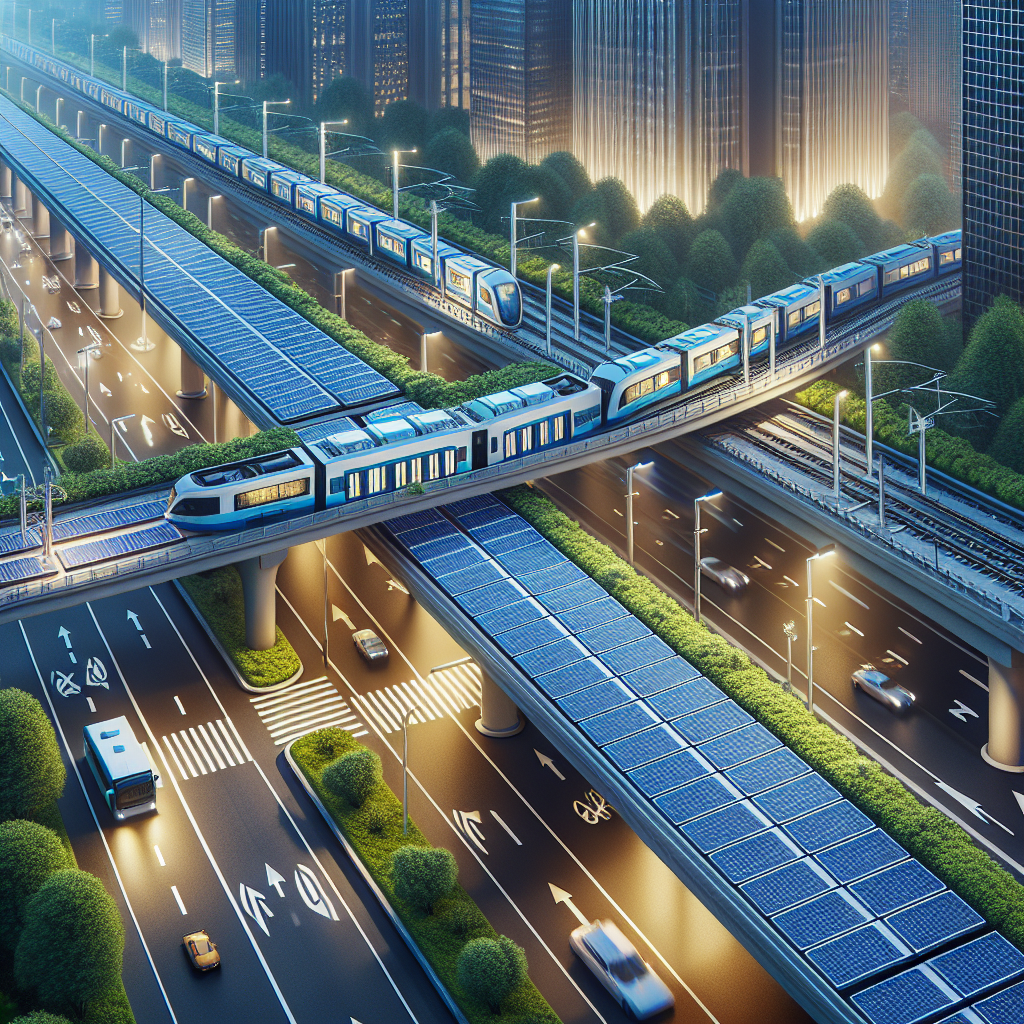Integrating Solar Power into Transportation Infrastructure
In the quest for sustainable development and reduced greenhouse gas emissions, integrating solar power into transportation infrastructure represents a promising avenue. This integration not only paves the way for a cleaner environment but also ensures a more resilient and efficient transportation system. This article delves into the mechanisms, benefits, challenges, and future prospects of incorporating solar energy into transportation infrastructure, followed by a FAQ section to address common inquiries.
The Mechanism
Solar power can be integrated into transportation infrastructure in several innovative ways. One of the most common methods is the installation of photovoltaic (PV) panels along highways, railways, and at transportation hubs like bus and train stations. These panels can generate electricity to power street lights, traffic signals, and surveillance cameras, and even feed surplus energy back into the grid. Another approach is embedding solar panels within the road surface itself, an emerging technology known as solar roads. Though still in the experimental phase, solar roads have the potential to generate significant amounts of electricity while providing the same functionality as traditional roads.
Electric vehicle (EV) charging stations powered by solar panels are another critical aspect of this integration. These stations can be installed in parking lots, along highways, and at transportation hubs, allowing EV owners to charge their vehicles with clean energy. Furthermore, solar-powered buses and trains are beginning to make their way into public transportation fleets, offering a direct application of solar energy in powering vehicles.
Benefits
The integration of solar power into transportation infrastructure offers myriad benefits. Environmentally, it contributes significantly to reducing carbon emissions and pollution, fostering a cleaner and healthier planet. Economically, it can lead to substantial cost savings over time, as solar energy provides a cheaper alternative to fossil fuels once the initial investment in solar technology is recouped. Additionally, this integration enhances energy security by reducing dependency on imported fuels and diversifying energy sources.
From a social perspective, the deployment of solar-powered transportation infrastructure can create numerous job opportunities in the renewable energy sector. It also promotes technological innovation and can lead to improved transportation services, particularly in remote areas where grid electricity is unreliable or unavailable.
Challenges
Despite its advantages, integrating solar power into transportation infrastructure poses several challenges. High initial costs and technological limitations are significant barriers. The efficiency of solar panels, particularly in cloudy or snowy conditions, and the durability of solar roads under heavy traffic, are areas requiring further research and development. Additionally, there are regulatory and logistical hurdles to overcome, including land use policies, zoning regulations, and the need for a skilled workforce to install and maintain solar infrastructure.
Future Prospects
The future of integrating solar power into transportation infrastructure is promising, with technological advancements and decreasing costs of solar panels playing a pivotal role. Innovations such as more efficient and durable solar cells, improved battery storage systems, and smart grids will enhance the viability and reliability of solar-powered transportation. Governments and private sectors worldwide are beginning to recognize the potential of this integration and are investing in research, pilot projects, and policy frameworks to support its development.
As public awareness and demand for sustainable transportation options grow, solar-powered infrastructure will likely become more prevalent. Collaboration among governments, industry, and academia will be crucial in overcoming existing challenges and realizing the full potential of solar energy in transportation.
FAQ Section
Q1: How efficient are solar roads compared to traditional solar panels?
A1: Solar roads are generally less efficient than traditional solar panels due to their horizontal placement and the need for durable, translucent materials that can withstand traffic but may not absorb sunlight as effectively. However, ongoing research aims to improve their efficiency and durability.
Q2: Are solar-powered vehicles currently available?
A2: While fully solar-powered vehicles are still under development and not widely available, there are vehicles with solar panels that provide auxiliary power for air conditioning, lighting, or battery charging. The primary focus has been on developing solar-powered charging stations for electric vehicles.
Q3: Can solar power completely replace fossil fuels in transportation?
A3: While solar power has the potential to significantly reduce reliance on fossil fuels, a complete replacement in the near term is unlikely. Solar energy will likely be part of a mix of renewable energy sources, including wind, hydro, and biofuels, that collectively reduce dependence on fossil fuels.
Q4: What is the role of battery storage in solar-powered transportation infrastructure?
A4: Battery storage plays a crucial role by storing excess solar energy generated during peak sunlight hours, which can then be used to power infrastructure during nighttime or cloudy days. This ensures a continuous and reliable supply of solar power for transportation needs.
Q5: How can individual consumers contribute to this integration?
A5: Individuals can contribute by advocating for and using solar-powered transportation options, investing in electric vehicles, and supporting policies and initiatives that promote renewable energy. Additionally, adopting solar power for home or business use can increase overall demand for solar technology, further driving its integration into various sectors, including transportation.
In conclusion, integrating solar power into transportation infrastructure holds tremendous promise for creating a sustainable, efficient, and resilient transportation system. While challenges remain, the ongoing advancements in technology and increasing support from governments and the private sector are making this vision more attainable than ever.

